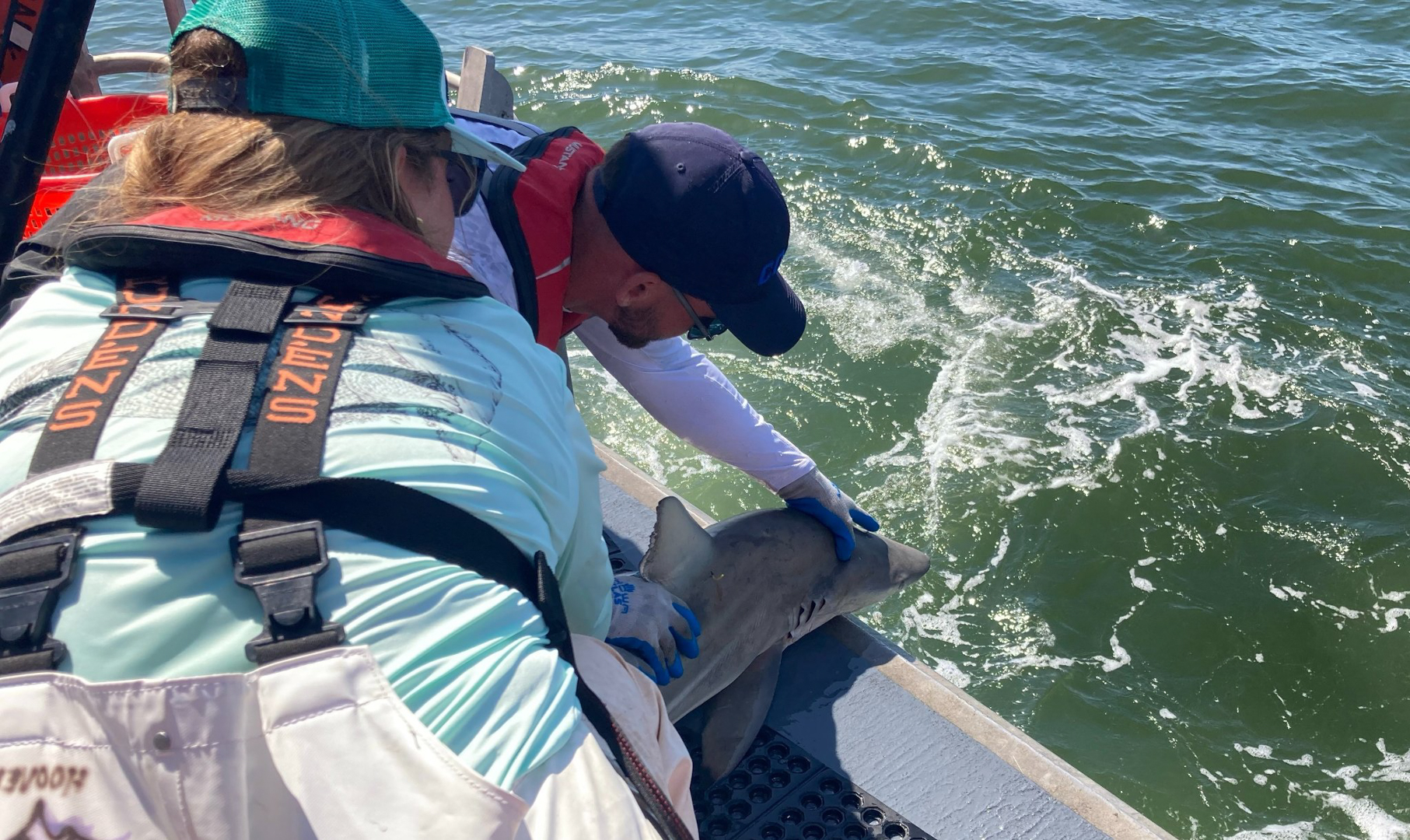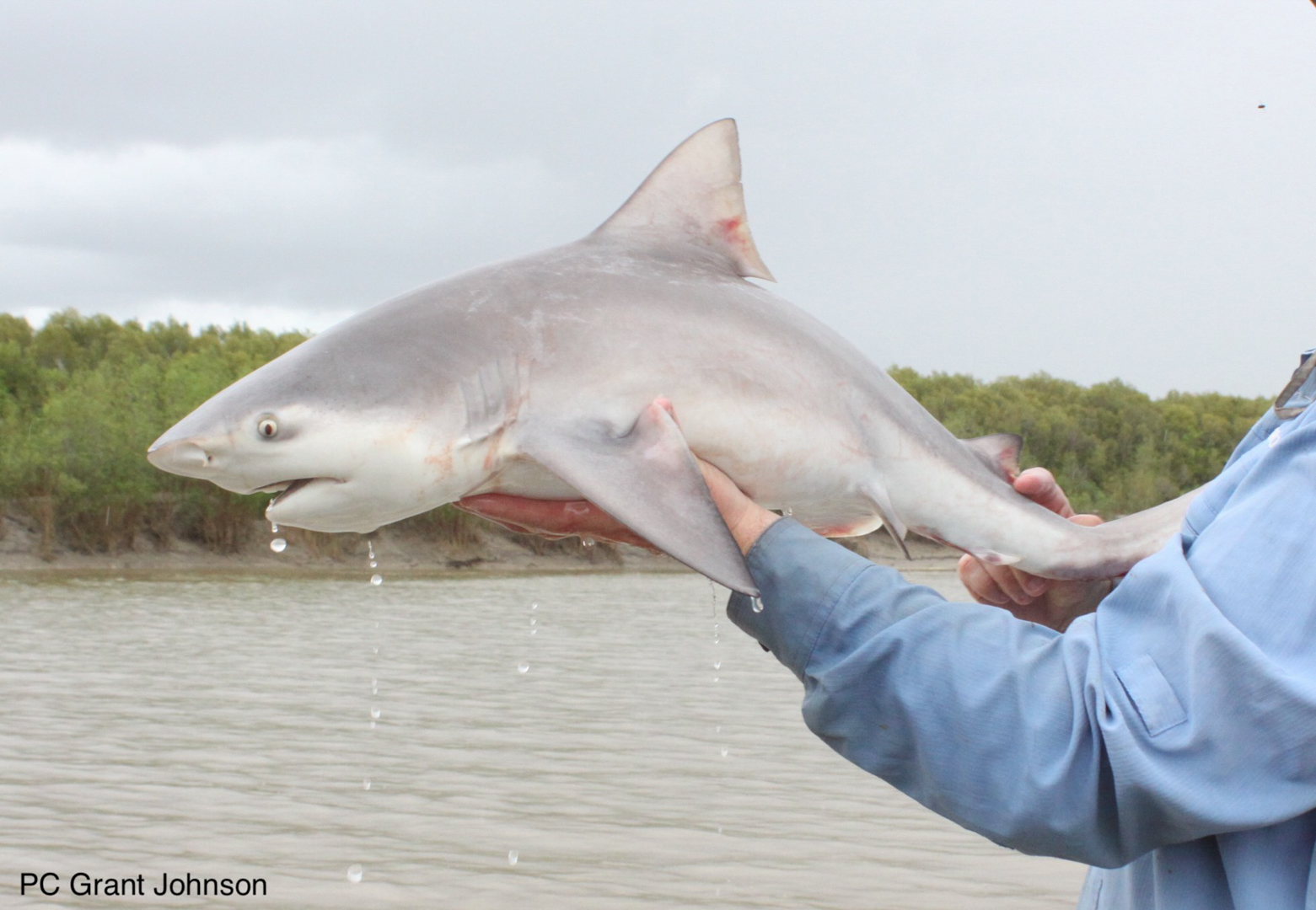USM Shark Expert Explains Many Shark Sightings Along Gulf Coast
Fri, 07/14/2023 - 09:45am | By: Gabriela Shinskie
 Summer is the perfect season to head over to the Gulf Coast and soak up everything
it has to offer, including great seafood, beaches, and relaxation. But along with
those amenities come unpleasantries - sunburn, extreme heat, and marine encounters
close to shore, including shark sightings.
Summer is the perfect season to head over to the Gulf Coast and soak up everything
it has to offer, including great seafood, beaches, and relaxation. But along with
those amenities come unpleasantries - sunburn, extreme heat, and marine encounters
close to shore, including shark sightings.
Jill Hendon, Director of the Center for Fisheries Research and Development (CFRD) at The University of Southern Mississippi (USM) is a shark expert and said these giant fish play an important role in our ecosystem, but there are ways we can minimize encounters.
“Remember when we enter the water, we are visiting the shark’s home,” said Hendon. “Just being aware will serve you and your family well. Don’t fish with bait in your pockets, don’t swim next people who are wade fishing or pier fishing, and don’t throw your food scraps in the water.”
 The top five states with the most reported shark bites are Florida, California, Hawaii,
North Carolina, and South Carolina. Florida is #1 according to the Florida Museum
of Natural History’s International Shark Attack Files, but it is important to remember
that they also have the most coastline. The United States leads the world in the number
of bites.
The top five states with the most reported shark bites are Florida, California, Hawaii,
North Carolina, and South Carolina. Florida is #1 according to the Florida Museum
of Natural History’s International Shark Attack Files, but it is important to remember
that they also have the most coastline. The United States leads the world in the number
of bites.
In Mississippi, there have only been three recorded unprovoked shark bite encounters according to the Shark Attack Data. This is the lowest of all the Gulf of Mexico states.
The words “shark attack” are a common misconception. Hendon said this is an inaccurate statement many make when describing the situation.
“Sharks do not have hands to politely explore things that they do not recognize. The majority of their sensory system is on their head. Exploring things with their mouth is a very natural operation. Think of a puppy that is biting and mouthing things as they learn about the world around them,” said Hendon.
Interactions between a shark and a human involves a mouthing event but unfortunately the shark’s sharp teeth leave a nasty mark. Sharks do not typically take a full bite or come back for a second interaction.
“They realize that what they have encountered is not something that they are interested in”, said Hendon.
The species of shark with the most non-fatal unprovoked bites are white (great white), tiger and bull.
Most bites are related to surfing and board sports. Swimmers account for 43 percent of bites followed by 35 percent from surfing. The risk of being bitten by a shark is extremely low and the trend continues to decrease as education of sharks increases.
Every summer we see news articles on shark bite interactions in coastal waters. Why do we see many interactions with sharks during the summer months? Hendon said warmer temperatures and humans contribute to the increase in sightings.
“Many coastal species are simply near shore during these months, then they move offshore during the cooler months,” said Hendon. “The warmer temperatures build the food chain from the phytoplankton to the bait fish to the migratory fish. Such a healthy food dynamic means there is a lot of fish activity this time of year. However, this is also the time of year that we enjoy spending on the beaches. Summer brings beach days, tourism, swimming, sunbathing, fishing and more. We are sharing the waters at the same time.”
It is important to stay informed and become aware of surroundings when entering coastal waters this summer. It will allow you to still have your fun days in the water and sun!
Visit the Center for Fisheries Research and Development for more information on research, outreach, and education.